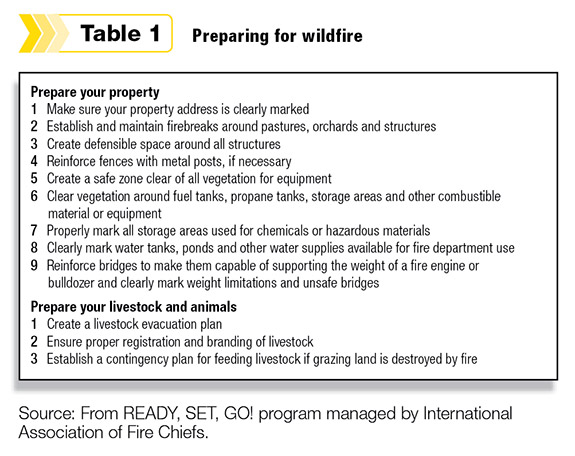Last year 9.3 million acres were lost to wildfire in one of the worst fire seasons since 1960. This year is predicted to be just as bad, if not worse, as 40 percent of the country suffers from serious to moderate drought conditions.
This season has already seen large fires including the Black Forest fire in Colorado, the Silver fire in New Mexico and the Carstens fire in California, all of which required evacuations.
In a May media conference call on the wildfire forecast, Secretary of Agriculture Tom Vilsack said, “We are now at a time in the season where we need to begin to prepare for what will likely be a difficult fire season as we position assets and as we sort of take stock of where we are.”
Western states are especially vulnerable to wildfire as continuing drought conditions, combined with a large amount of trees killed by the mountain pine beetles, create very serious conditions.
Jeremy Sullens, a wildfire analyst for the National Interagency Fire Center, said in the conference call, “Where we're thinking we're going to have a severe problem this fire season is in the Pacific Coast states moving into Idaho and south-western Montana across to California, Oregon and south-central Washington.”
Preparation can make a major difference on how severely a cattle operation is affected during a wildfire. State and federal organizations have compiled suggestions for ranches.

Plans of action
One program called “Ready, set, go” was designed by a coalition of federal and private agencies including the International Association of Fire Chiefs and the USDA Forest Service.
Suggestions for livestock owners fall into two categories: preparing your property and preparing your livestock.
Grazing can put cattle in danger as rangelands burn. Strategic grazing can help save assets and lives. Irrigated areas are much safer in the face of wildfire then dry areas.
Having a cattle evacuation plan that includes grazing near irrigated safe zones gives ranchers a stronger chance of saving cattle during a fire.
Fire-panicked cattle are more prone to wander, so branding takes on an extra importance at this time of year. Having updated registration and paperwork will make recovering cattle a simpler process.
Feed contingency
Ranchers should also make a post-fire feed contingency plan. Some questions to consider when creating a feed plan include:
- If normal grazing land became unavailable, are there other options for feed?
- If forage fields or stacks were affected by wildfire, are back up sources available?
- What resources are locally available for emergency feed situations?
Grazing contingency plans may include spreading out grazing within a region. This will reduce the likelihood of a fire taking out all options.
Space can also help save forage stacks. The old adage, “Don’t put all your eggs in one basket” is especially relevant when the goods are flammable piles of feed and fire is threatening.
One simple tip comes from third-generation Colorado rancher Roc Rutledge. “I keep the bale stacks separated so if one catches fire, the others won’t catch on fire too.”
Other key decisions

If key rangeland and forage is destroyed, producers can look into grazing on grassland that is part of the Conservation Reserve Program (CRP). These grasslands are designed to help reduce soil erosion and other land management problems and are normally unavailable for grazing.
In emergency situations, however, permits can be granted on a state or federal level to allow access to needed forages. For specific details on grazing options, contact a local Farm Service Agency.
George Seidel, who owns Rabbit Creek ranch in Colorado, faced major feed problems last year when his permit areas were burned in a wildfire. He recommends planning backup management options into a contingency plan.
“Think about what you’re going to do if you don’t have enough feed,” said Seidel. “Which animals are you going to sell and how are you going to manage them? One decision we made was to sell cows and keep heifers.
“Those heifers aren’t going to produce a calf for the first year, but they aren’t going to eat so much either.”
Preparing the property
Properties also need to be prepped for a wildfire. In addition to normal home defense, ranches should clear vegetation from around propane tanks and other combustible materials or equipment.
If fire personnel are needed to defend a property, steps can be taken to make their job easier. Clearly marking addresses, reinforcing bridges to bear emergency equipment and maintaining and marking water supplies will all save valuable time.
Rutledge said, “We always keep a thousand-gallon fertilizer tank full of water, like most neighbors do, just in case.”
In addition to physical preparedness, Rutledge said that one of the best defenses during fire season is to be watchful and aware of the danger.
“Just keep your eyes open and be diligent. If you see smoke go check it out,” said Rutledge. “It is in everyone’s best interest to look out for everybody.”
Additional tips and resources can be found here. ![]()
PHOTOS
Photos from Thinkstock.









